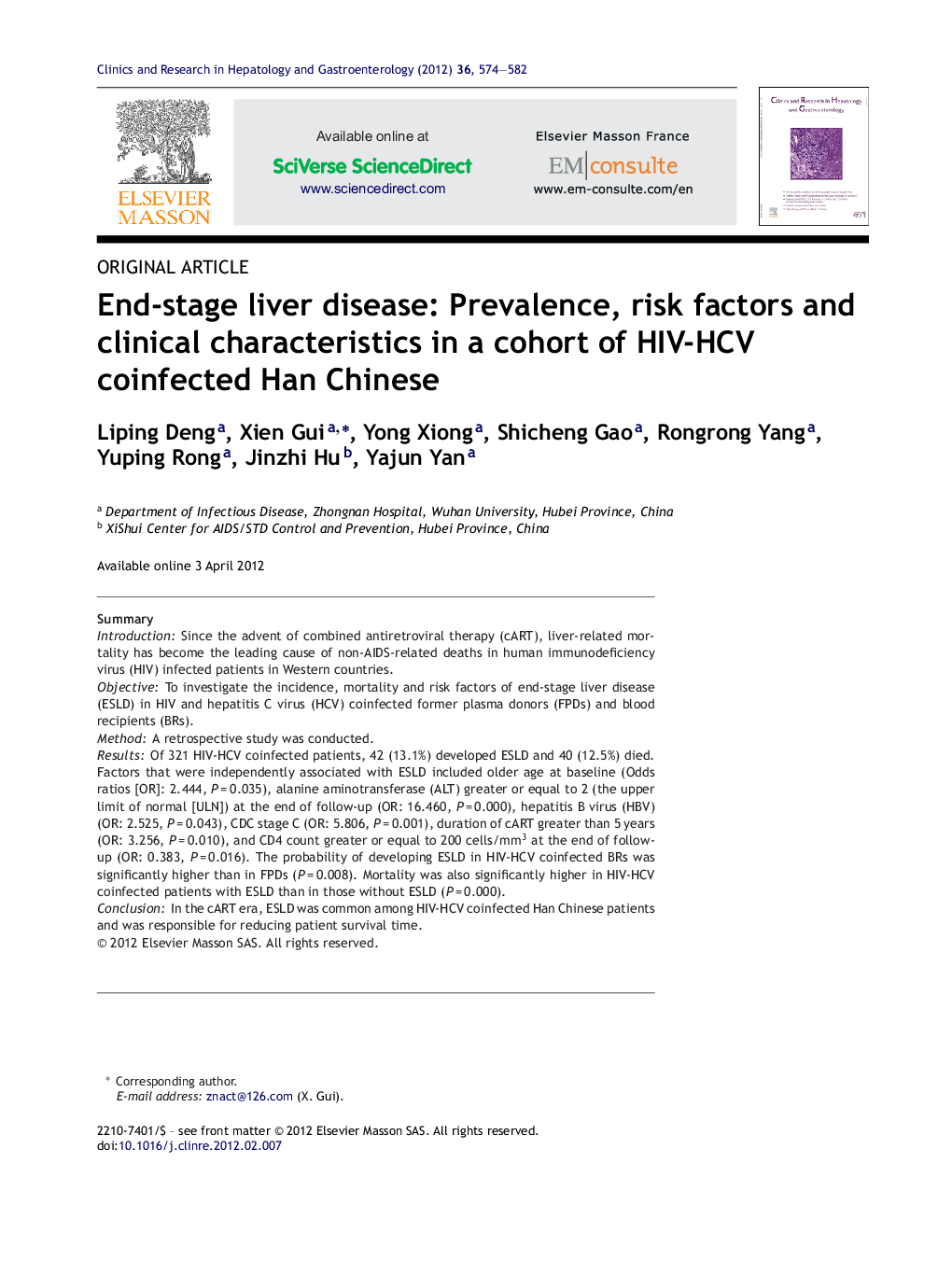| Article ID | Journal | Published Year | Pages | File Type |
|---|---|---|---|---|
| 3286818 | Clinics and Research in Hepatology and Gastroenterology | 2012 | 9 Pages |
SummaryIntroductionSince the advent of combined antiretroviral therapy (cART), liver-related mortality has become the leading cause of non-AIDS-related deaths in human immunodeficiency virus (HIV) infected patients in Western countries.ObjectiveTo investigate the incidence, mortality and risk factors of end-stage liver disease (ESLD) in HIV and hepatitis C virus (HCV) coinfected former plasma donors (FPDs) and blood recipients (BRs).MethodA retrospective study was conducted.ResultsOf 321 HIV-HCV coinfected patients, 42 (13.1%) developed ESLD and 40 (12.5%) died. Factors that were independently associated with ESLD included older age at baseline (Odds ratios [OR]: 2.444, P = 0.035), alanine aminotransferase (ALT) greater or equal to 2 (the upper limit of normal [ULN]) at the end of follow-up (OR: 16.460, P = 0.000), hepatitis B virus (HBV) (OR: 2.525, P = 0.043), CDC stage C (OR: 5.806, P = 0.001), duration of cART greater than 5 years (OR: 3.256, P = 0.010), and CD4 count greater or equal to 200 cells/mm3 at the end of follow-up (OR: 0.383, P = 0.016). The probability of developing ESLD in HIV-HCV coinfected BRs was significantly higher than in FPDs (P = 0.008). Mortality was also significantly higher in HIV-HCV coinfected patients with ESLD than in those without ESLD (P = 0.000).ConclusionIn the cART era, ESLD was common among HIV-HCV coinfected Han Chinese patients and was responsible for reducing patient survival time.
